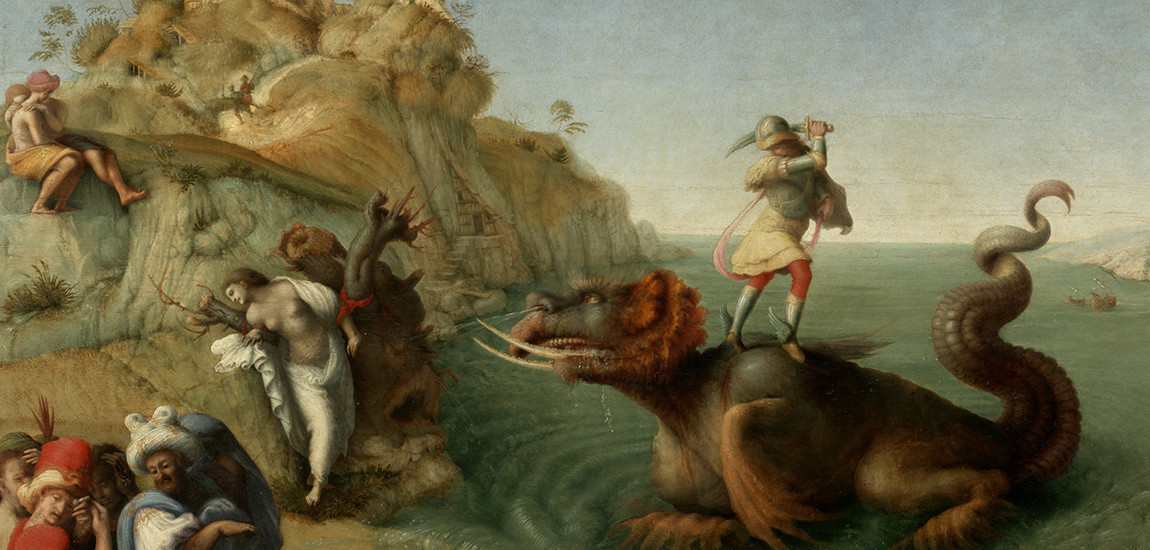
5 Greek myths in Art
Admiring a work of art and understanding a work of art are two very different things. Of course, understanding art is not easy, but at least as far as the works of the past are concerned, it helps that the artists often used a few recurring themes. Knowing at least the most famous of these, can certainly be useful, so today we will tell you 5 Greek myths to help you better understand the masterpieces you will see in Florence.
Birth of Venus
Venus (Aphrodite for the Greeks) is one of the characters of mythology that we most often find represented in the history of art. Deity of love, fertility and beauty, she was one of the most ancient and important goddesses along with Artemis, Athena and Hera.
According to the legend, the Titan Cronus, together with his mother Gaea, decided to oust his father Uranus, who had treated his children as if they were nothing but monstrosities.
With the scythe that Gaea had given him, Cronus cut the genitals of Uranus and threw them into the sea, near the island of Cyprus.
Right there, from the foam of the turbulent sea, Venus was born, which is why she is so often depicted rising naked from the waters. In some transpositions of the story, it is told that she came out of a shell, a version celebrated by the famous painting by Botticelli.
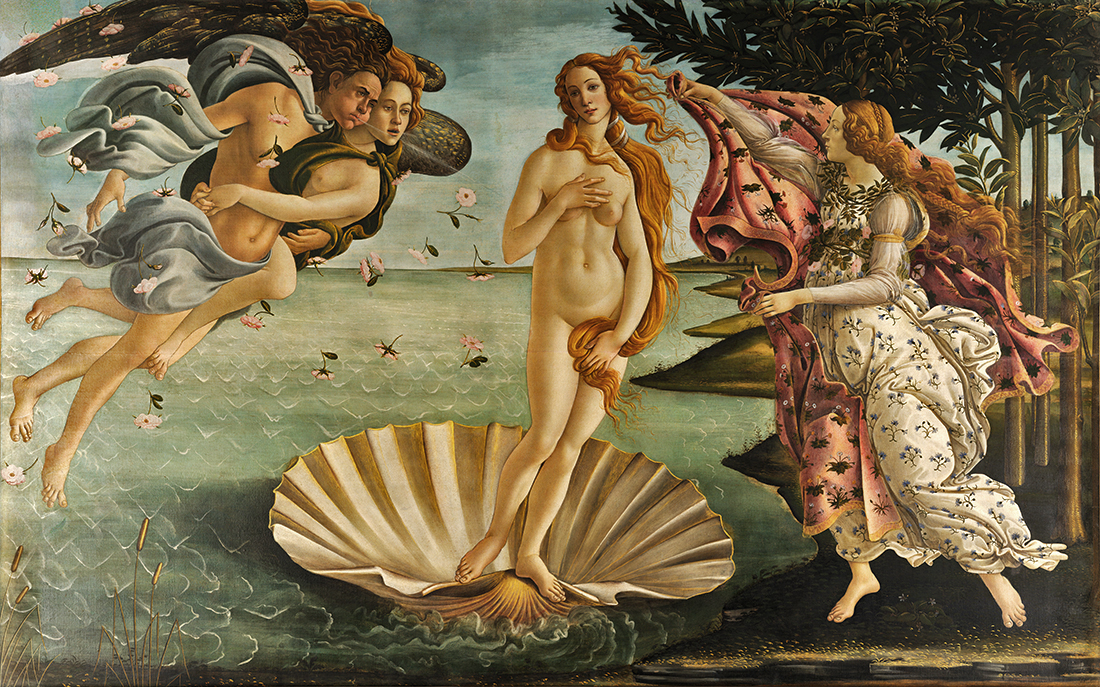
Birth of Venus (1485–1486) by Botticelli - Florence, Uffizi Gallery
Perseus and Medusa
Perseus is another character that was much loved by artists, and often represented in ancient paintings and sculptures alongside the terrible Medusa.
Medusa was one of the three gorgons, who had the power to petrify anyone who looked into their eyes. She was the most beautiful and the only mortal of the three. Her beauty was such as to arouse the admiration of both men and gods. For this, she was turned into a horrible monster by Athena, jealous of her beauty, or more likely as a punishment for lying (albeit against her will) with Poseidon.
Perseus, on the other hand, was the son of Zeus and Danae, the latter a beautiful woman, whom King Polydette wanted to marry at all costs. However, she did not reciprocate his love and had only affection for her son.
Therefore, Polydette decided to get rid of Perseus, making him believe that he was interested in marrying another woman and asking the young man to bring him a wedding gift that he knew would be very dangerous to obtain: the head of Medusa.
Polydette certainly could not have imagined that Perseus would receive enormous help in his enterprise. The nymphs gave him winged sandals to move very fast via air, a saddlebag and Hades's helmet, which would made him invisible. Hermes gave him a sharp scythe and a shining shield.
Thus armed, Perseus found the gorgons and waited for them to fall asleep. Knowing that he must not look directly into Medusa's eyes, he used the shield as a mirror so that he could only see her in reflection, and when the time was right he succeeded in decapitating her with the scythe with one blow.
Since then, the young hero kept in the saddlebag Medusa's head - which had not lost its power - and used it to defeat his enemies by turning them to stone.
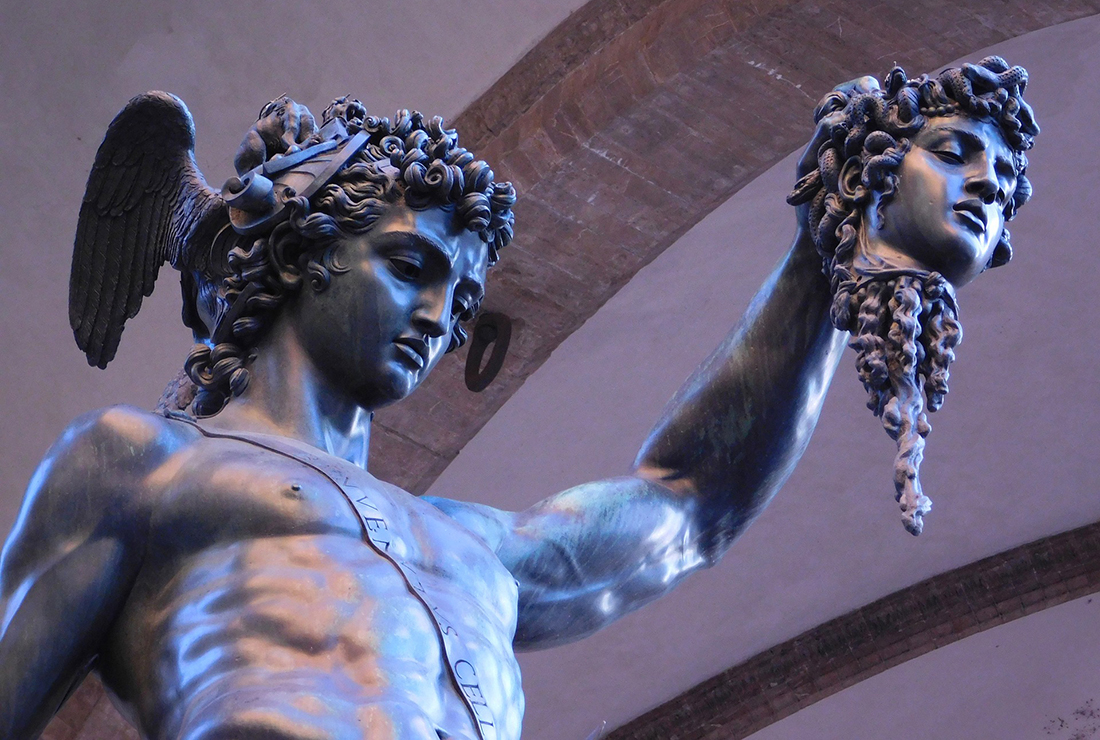
Perseus with the head of Medusa (1545-1554) by Benvenuto Cellini - Florence, Loggia dei Lanzi
Leda and the Swan
Greek myths are full of stories of gods falling in love with mortal women and deciding to posses them. Leda’s, is one of these stories. She was the beautiful queen of Sparta, so beautiful that Zeus fell in love with her.
While Leda was sleeping on the banks of a pond, she was awakened by a white swan, which approached her and seduced her, thanks also to the strong scent of ambrosia that the animal emanated, intoxicating the woman.
This swan was none other than Zeus, master of metamorphosis, always performed to approach the women he had fallen in love with.
From two eggs, generated by this union, twins were born: Castor and Pollux, and Clytemnestra and Helen of Troy.
A story that has stimulated the erotic fantasies of many artists, therefore very often represented in painting and sculpture.
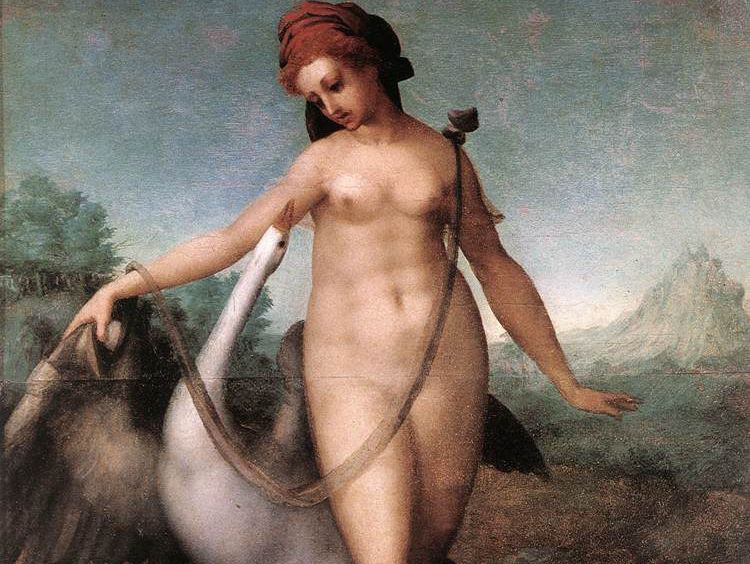
Leda (1512 -1513)attributed to Pontormo - Florence, Uffizi Gallery
Liberation of Andromeda
Andromeda's story begins when her mother, Queen Cassiopeia, declared that she and her daughter were more beautiful than the Nereids, the seductive sea nymphs.
This offended the Nereids and Poseidon who as punishment, sent the horrible monster Ceto to devastate the coasts of the kingdom of King Cepheus, consort of Cassiopeia.
Cepheus consulted the Oracle of Ammon, who declared that in order to appease the monster he had to sacrifice his virgin daughter: Andromeda.
Poor Andromeda was therefore chained to a rock by the sea waiting for the monster to attack, but luckily for her, the young Perseus was passing by that rock and immediately fell in love with the beautiful damsel in distress.
After she told him her story, he decided to help her, killed the monster and finally made her his bride. After much pain, a well-deserved happy ending for the beautiful Andromeda.
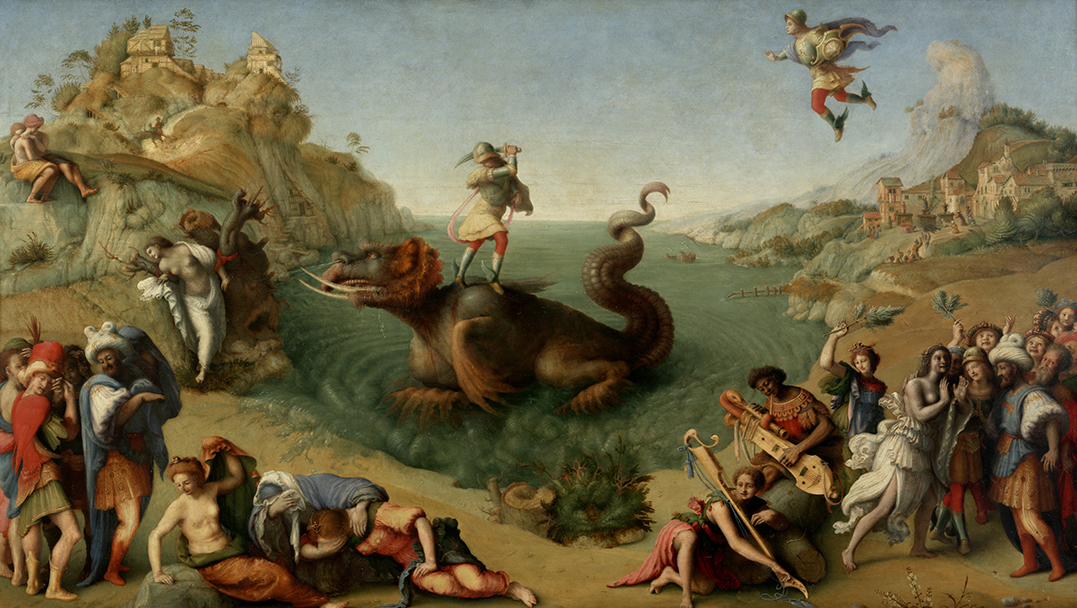
Liberation of Andromeda (1510-1513) by Piero di Cosimo - Florence, Uffizi Gallery
Laocoön
Unfortunately, not as happy was the fate of Laocoön, a Trojan priest whose story takes place during the final battle of the decennial Trojan War.
Upon arrival in the city of the famous horse designed by Ulysses, Laocoön was the only one who found this a suspicious gift. He ran to the horse and hurled his spear at it, declaring:
“I fear the Greeks, even when they bring gifts”.
For trying to obstruct the plan of Ulysses, the goddess Athena, protector of the Greeks, unleashed two enormous snakes - Porcete and Caribea - against the sons of the priest. Laocoön's efforts to save them were useless; the two monsters crushed him in their grip and devoured his children.
As Virgil tells us in the Aeneid, Laocoön died emitting moans while suffering immense pain.
A sad story that of the priest, who admonishes, and shows us what happens to anyone who tries to go against the will of the gods.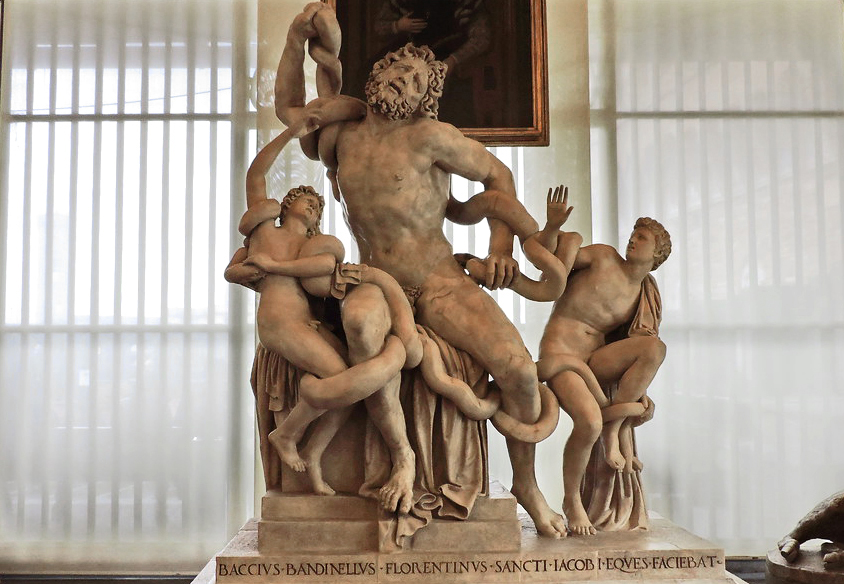
Laocoön (1520-1525) by Baccio Bandinelli, copy of the Roman sculpture - Florence, Uffizi Gallery



